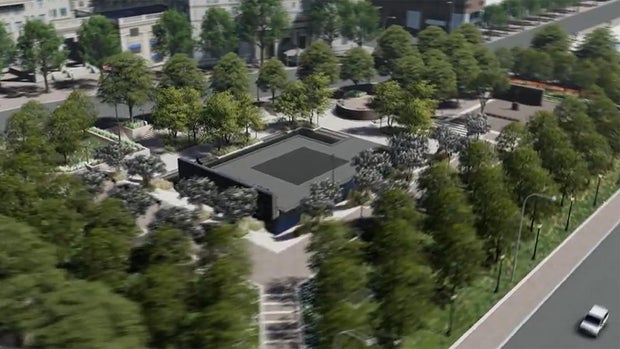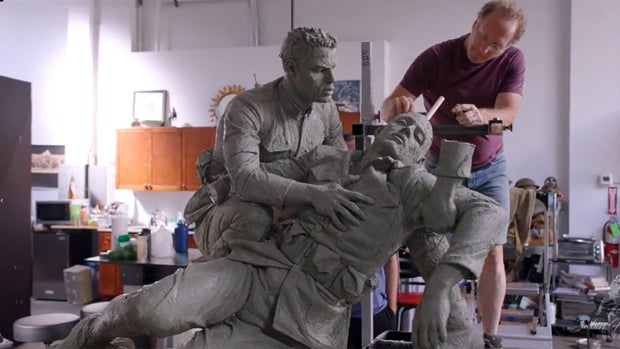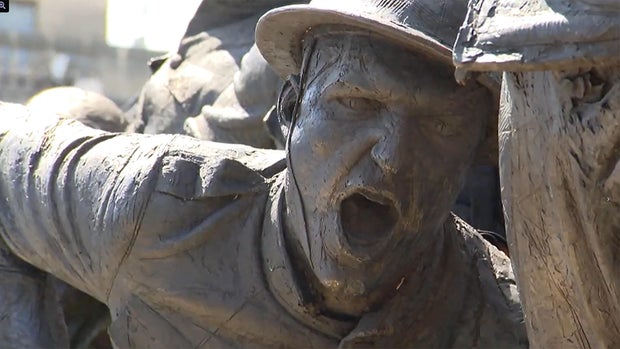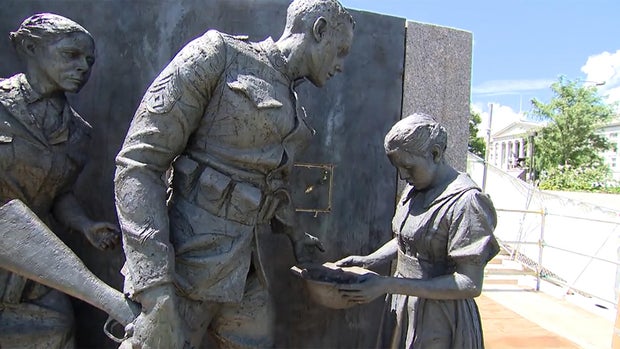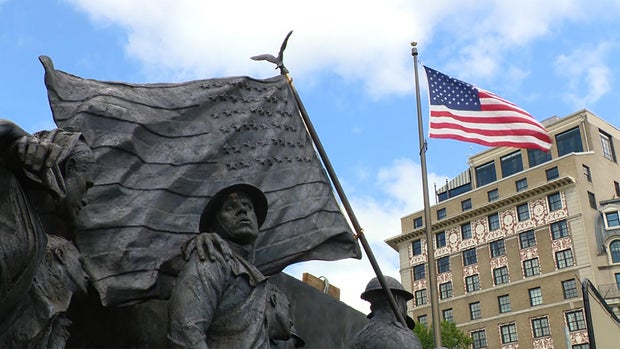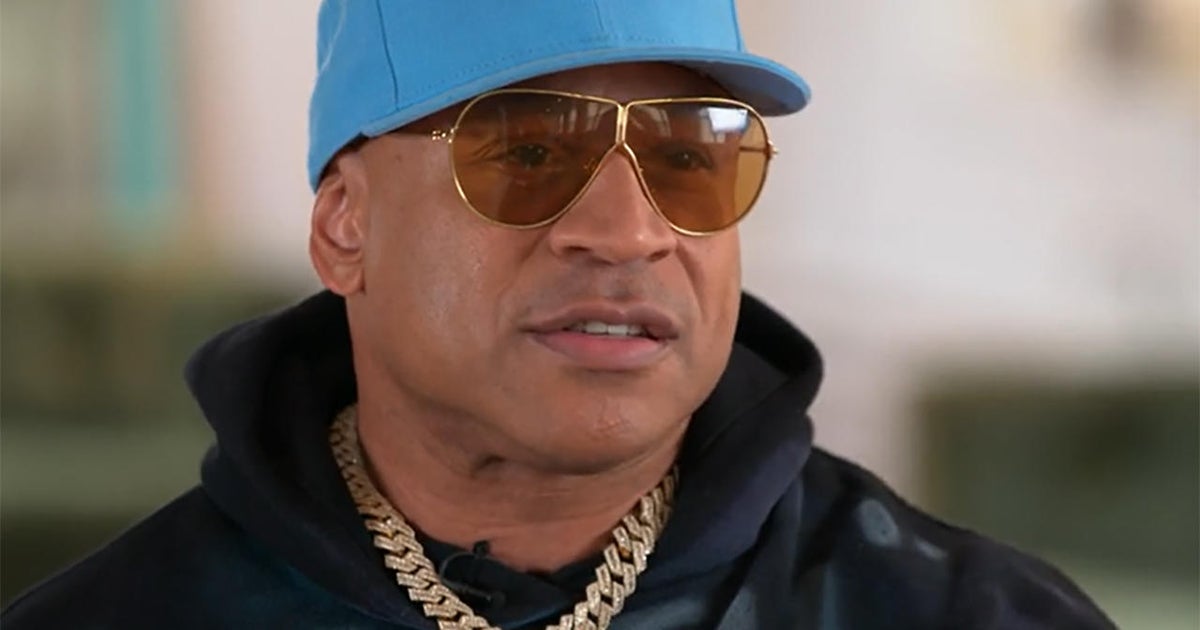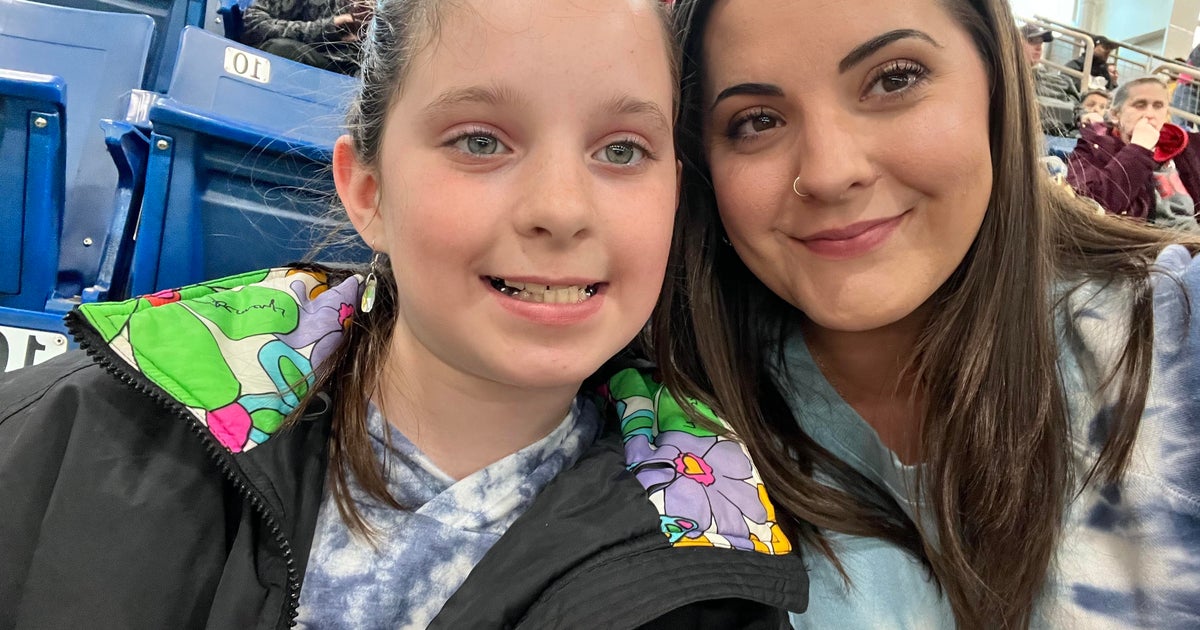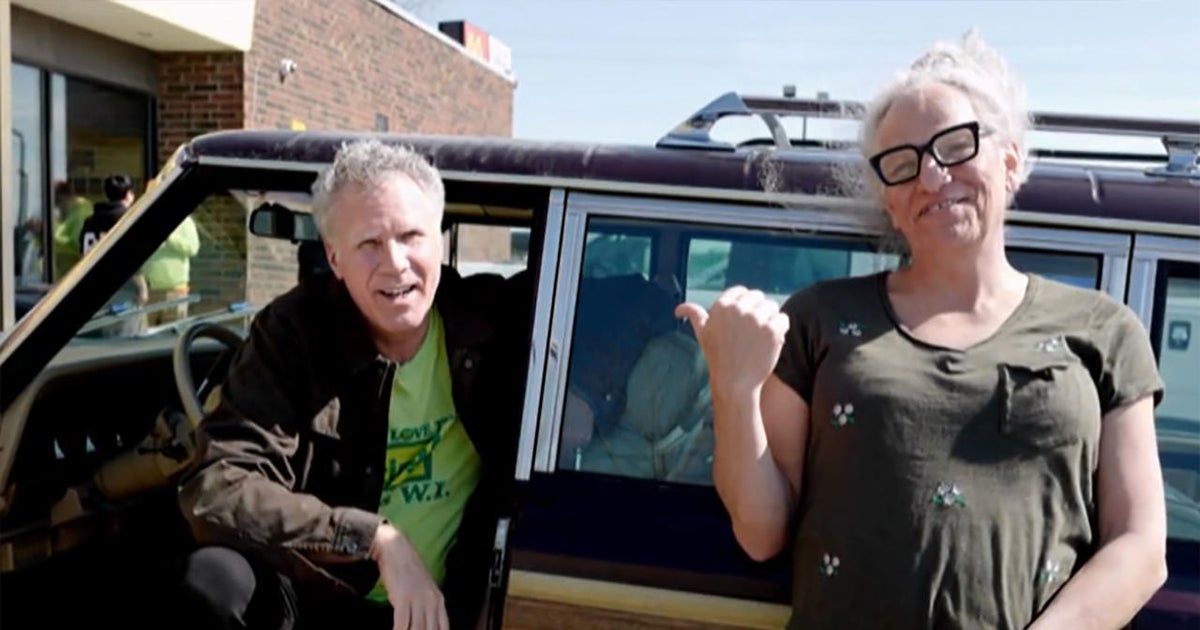Creating a memorial to the horrors of World War I
Over the past 40 years, memorials to America's 20th century wars have sprung up across Washington, D.C., with one conspicuous omission: There was no national memorial to veterans of World War I in our nation's capital.
"If you ask anybody on the streets where the World War I memorial is in D.C., most of them will point you to the D.C. Veterans Memorial," said Joe Weishaar. "For a long time people assumed that it was the national memorial. But the little rotunda that's there is only to district residents."
In 2015, Weishaar was a 25-year-old intern at a Chicago architecture firm when he heard about an open design competition for D.C.'s first national World War I memorial. "I set up a shelf in my closet, I set my computer on the shelf, and that was my office," he said. "I was doing this, like, in nights and weekends after work."
He sent off his design and then forgot about it, until … "I got a very strange phone call and they're like, 'You're one of five finalists. We need you in Washington, like, tomorrow,'" he said.
Weishaar had never even been to Washington. "No, I had never been. Didn't own a suit!"
Weishaar's design beat out more than 360 applicants from over 20 countries.
When the memorial opened to the public in 2021, only one thing was missing: an intricate, 60-foot-long bronze relief, the memorial's centerpiece, created by classical sculptor Sabin Howard, a firebrand and self-appointed bulwark against the scourge of modern art. "Artists like de Kooning or Jackson Pollock, I'm in opposition to them," said Howard. "It's a scam, what's happened in the last 100 years. I'm here to rectify that scam."
For his tableau depicting World War I, he said, "I threw out the last hundred years of history in the art world, and I went back to what preceded that period of time."
Shepherding Howard through the byzantine approvals process was his client, the Congressionally-created World War I Centennial Commission.
"You go to these meetings, and none of the people in the room are artists; they're all lawyers and, you know, Washington bureaucrats," Howard said. "The commission asked me, 'We need to see more – a dying soldier, perhaps, and more suffering.' I started posing the models. You had madness, you had amputations, death. So, I went pretty deep."
When he brought that iteration into the commission office, he said chairs were literally thrown in the room.
"I was treated as, 'You're working for us.' And I took that for a long time. But then we got to a moment in the relationship, I stood up and I said, 'I will not compromise this design. And if you don't like it, you sculpt it, and I'll send you some webinars.'"
The World War I Centennial Commission said they are "proud of the magnificent Memorial that Joe Weishaar and Sabin Howard have created," and that it "provides a model of how a complex and collaborative process can work."
Howard may lack tact, but he doesn't lack confidence. His sculpture charts a soldier's wartime journey, from his ambivalent departure, to his wordless homecoming, to the animal savagery of combat in-between. Pointing to one soldier, he said, "If you look at this figure, I don't think in the history of art that there's ever been a figure with this much explosive energy."
Howard's "movie in bronze," consisting of 38 figures weighing 25 tons, ends with a soldier, home from war, lowering a helmet to a young girl.
For World War I historian Jennifer Keene, the sculpture's final tableau illustrates the heavy toll the war exacted on its veterans: "They were not prepared for what they were going to find – the quagmire, the terror of artillery shells, rats and lice and trench feet. No, they are completely unprepared."
Keene said, "I think that idea at the end, that it's just a gesture, right? 'Here's the helmet.' There's no words there, because maybe there aren't words that can really describe what that soldier has been through."
The sculpture, which will be unveiled at a ceremony later this month, took nine years of Sabin Howard's life. "Yeah, but that's not a lot, when you think about it," he said.
Asked what he hopes visitors to the memorial a century from now would experience, Howard replied, "I want the visitor 100 years from now to have the same feeling that I had when I went to go see the David when I was 25. We are made in God's image. That sculpture is made in God's image. So is mine. It's a simple thing, but very deep."
For more info:
- National World War I Memorial, Washington, D.C. (National Park Service)
- Sabin Howard (Official site)
- Joe Weishaar (Official site)
Story produced by Robert Marston. Editor: Joseph Frandino.
See also:
- Honoring America's war dead far from home ("Sunday Morning")
- World War II veterans speak to the ages ("Sunday Morning")
- Building a monument to wounded warriors ("Sunday Morning")
